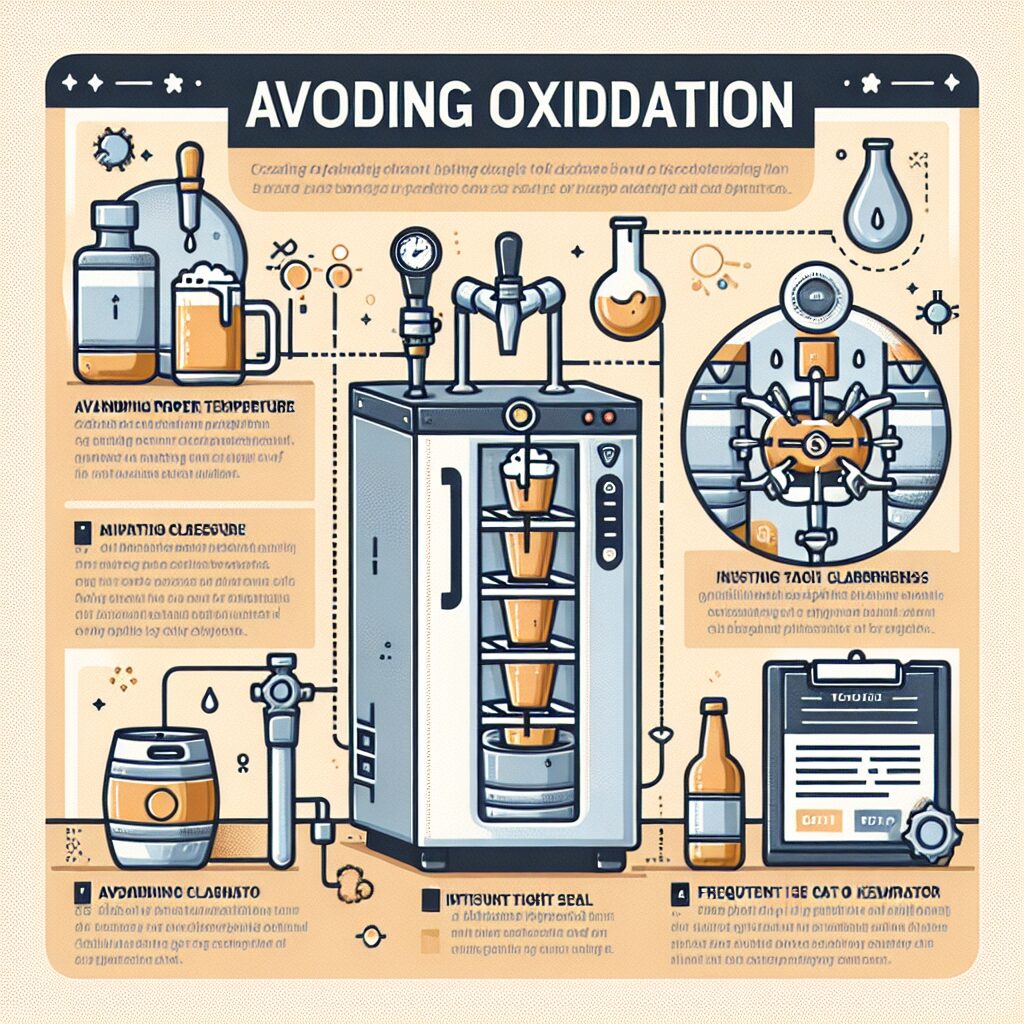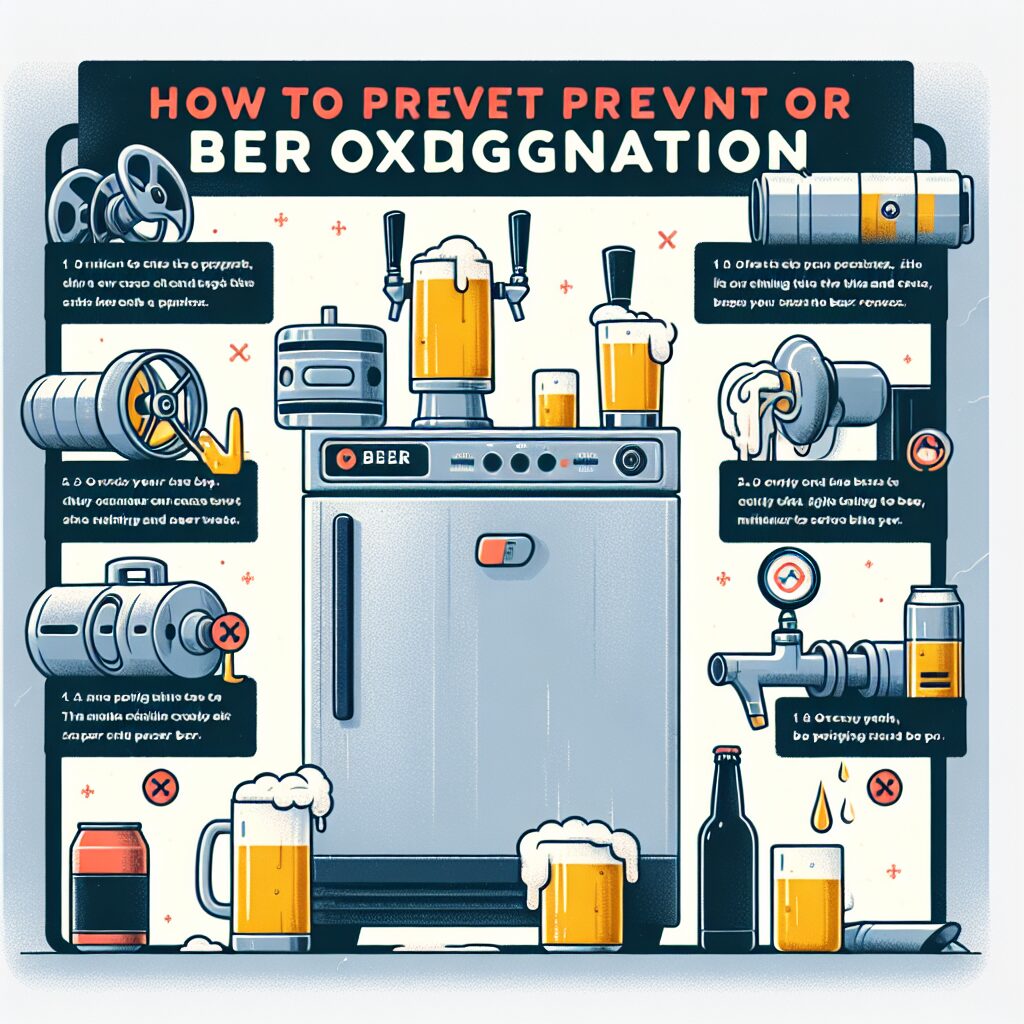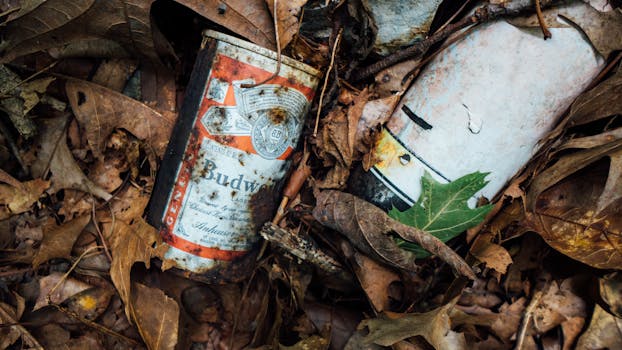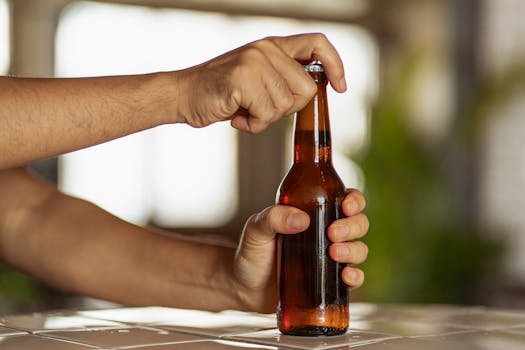As an Amazon Services LLC Associates Program participant, we earn advertising fees by linking to Amazon, at no extra cost to you.
Best Practices for Kegerator Care
Here are some straightforward tips to keep your beer fresh and avoid oxidation in your kegerator.
- Keep your beer lines clean. Regular cleaning prevents bacteria growth that leads to oxidation.
- Use CO2 to pressurize your system. This helps keep oxygen out and maintains beer quality.
- Monitor keg pressure. Proper pressure minimizes oxygen ingress, keeping your beer fresh.
- Consider nitrogen flushing. Contrary to popular belief, nitrogen can effectively displace oxygen, preserving flavor.
- Store kegs in a cool place. Warmer temperatures speed up oxidation, ruining your beer’s taste.
- Use stainless steel kegs. They protect against oxidation better than plastic options.
- Conduct regular sensory evaluations. This helps identify off-flavors early, allowing for quick action.
- Invest in advanced cleaning technology. Ultrasonic cleaners can reach areas traditional methods miss, ensuring thorough sanitation.
Aug 10, 2023 … … keg, which is not good for the beer. It makes it oxidized, and it'll make it spoil within 24 hours. So if you're gonna kill the keg. within …
If you have every bought a keg you have probably used a picnic tap …
Nov 4, 2024 … The advantage of PERA keg regulator is that it can freely adjust pressure, resist beer oxidation and keep beer fresh. In addition, PERA beer keg …
Nov 4, 2024 …Prevent Spoilage: With a one-way valve, Pickle Pipes let the gas out while keeping oxygen from getting in, preventing spoilage and mold growth …
Feb 8, 2024 … ✨ Prevent oxidation and preserve those delicious flavors with … you can only buy beer that's below 5% alcohol by volume. And you …
Keep your tequila tasting fresh for longer by sealing your bottles wit …
Key Factors Contributing to Beer Oxidation
Here are the top factors that can lead to oxidation in your beer. Understanding these will help you keep your kegerator in tip-top shape!
- . Oxygen exposure is the main culprit. Even a little air can spoil your brew.
- . Temperature matters! Warmer beer oxidizes faster, so keep it cool.
- . Cleaning is key. Dirty kegs can introduce bacteria, leading to off-flavors.
- . Use CO2 effectively. Proper pressure helps keep oxygen at bay.
- . Consider nitrogen flushing. It displaces oxygen and preserves freshness better than CO2.
- . Stainless steel kegs are your friends. They protect against oxidation much better than plastic.
- . Minimize keg time. The less time beer spends in the keg, the fresher it stays.
- . Regular sensory evaluations. Train your staff to detect off-flavors early.

Proper Cleaning and Sanitization of Kegs
Keeping your kegs clean is non-negotiable. Here’s how to do it right:
- Clean kegs regularly. Use a dedicated cleaning solution to eliminate bacteria.
- Sanitize everything. Ensure all beer lines are sanitized to prevent contamination.
- Rinse thoroughly. Residual cleaning agents can spoil your beer’s flavor.
- Monitor pressure levels. Proper pressure minimizes oxygen ingress and keeps your beer fresh.
- Consider ultrasonic cleaners. They provide deep cleaning without harsh chemicals.
May 22, 2024 … … keg, preventing oxidation. This allows every drop to be served and … Troubleshooting Your Kegerator or Draft Beer System. Oct 16, 2024 …
Recognizing Off-Flavors Related to Oxidation
Oxidation can ruin a good brew. You might notice flavors that taste like cardboard or wet paper. These off-flavors sneak in when beer meets oxygen, especially during transfer and serving.
It’s not just about the beer; it’s about your experience. If you detect stale flavors, it’s a sign of oxidation. Even a tiny bit of air exposure can lead to significant taste changes over time.
Many brewers think they can spot these off-flavors easily. But I believe that regular sensory evaluations are key. Training your team to identify these issues can save your batch.
According to the Cicerone Certification Program, trans-2-nonenal is a specific compound that gives off that papery taste. Recognizing this flavor early can help you act before it spreads.
While some swear by traditional methods, I think investing in staff training for sensory evaluations is a game changer. It keeps quality in check and helps maintain the beer’s intended taste.
Effective Use of CO2 and Nitrogen in Draft Systems
Here’s how to effectively use CO2 and nitrogen to keep your beer fresh and minimize oxidation:
- Use CO2 to purge oxygen from kegs. This keeps your beer fresh and flavorful.
- Consider nitrogen flushing. It’s inert and doesn’t react with beer, reducing oxidation risks.
- Maintain proper pressure in your kegerator. This prevents oxygen ingress and keeps the beer tasting great.
- Regularly check your gas lines. Any leaks can introduce oxygen, ruining your beer.
- Invest in a quality CO2 regulator. It ensures consistent pressure and flow, minimizing oxidation.
Feb 8, 2017 … Purge the keg about 6-8 times at 30 PSI after kegging. I pay 0 attention to oxygen at any other stage of brewing. I've never had an oxidized …
What do you do to prevent oxidation? | Homebrew Talk – Beer, Wine …
Feb 5, 2024 … Starsan purge your keg before filling with beer. Simply purging the keg with CO2 will not remove all the oxygen and can lead to oxidation.
Will an oxidized beer continue to oxidize if bottled? : r/Homebrewing
Jul 20, 2016 … So.. having done some reading and not wanting to bin my kegs, I decided to prime the keg using dextrose (100g for 5G) rather than force carbing, …
Solved my oxidation woes | Homebrew Talk – Beer, Wine, Mead …
Dec 17, 2017 … Bubbling through the beer at pressure will do a lot to ease some of the DO out. I don't recommend that for aromatic forward beers like IPAs, but …
Mar 4, 2014 … … beers can have a harsh “green” flavor that will mellow with time. It could be oxidation from not purging your kegs before/after filling. I …
Diacetyl Issue in Keg – Yeast & Fermentation – Northern Brewer Forum
Advanced Kegerator Technologies for Beer Freshness
Many folks think that traditional kegerators do the job just fine. I disagree because advanced technologies can elevate beer freshness to new heights. For instance, vacuum-sealing systems are game-changers. They create a low-oxygen environment right from the start, which is essential for keeping flavors intact.
Most people rely on CO2 for pressurizing their kegs. However, I believe using nitrogen is often overlooked. Nitrogen doesn’t react with beer, which means it can help maintain that fresh taste longer. According to Brouwland, “Working with CO2 pressure can prevent nearly all these risks so you can brew beer of the highest quality.” But I think nitrogen deserves more attention.
Another tech to consider is inline filtration systems. These can remove impurities and unwanted particles that lead to off-flavors. Regularly cleaning lines is great, but why not take it a step further? It’s that simple to ensure your beer tastes as fresh as possible.
And let’s not forget about temperature control. Keeping your kegerator at the right temp isn’t just a luxury; it’s a necessity. Warmer beer oxidizes faster, so maintaining a consistent cool environment is key.
In the end, embracing these advanced technologies can make a world of difference in your beer experience. Don’t just settle for average; strive for excellence in every pour!
Essential Techniques to Minimize Oxidation in Kegerators
Minimizing oxygen exposure is key to preserving beer taste. I’ve learned that keeping beer lines free from oxygen is a game changer. Using a CO2 tank to pressurize these lines is a must.
Regularly cleaning the beer lines prevents bacteria growth. This is crucial because bacteria can lead to oxidation-related issues. A clean system means fresher beer.
Temperature control is another biggie. Beer served too warm oxidizes faster. Keeping it cool helps maintain its intended flavor profile.
Most brewers think CO2 is the only way to go, but I believe nitrogen flushing is often overlooked. Nitrogen displaces oxygen effectively, preserving beer freshness. It’s that simple!
Additionally, I recommend reducing the time beer spends in the keg. Serve it quickly to keep it fresh. Every second counts!
For more insights, check out Craftmaster Stainless and their take on keg maintenance.
Remember, proper keg maintenance is vital. Regular cleaning and monitoring pressure levels will keep your beer tasting great for longer. Don’t let oxidation ruin your brew!
Alternative Methods for Keg Maintenance
Most people think traditional cleaning methods are the way to go for keg maintenance. I believe using ultrasonic cleaners is a game-changer. These devices use sound waves to create microscopic bubbles that clean hard-to-reach areas without harsh chemicals.
Regular cleaning is a must, but many overlook the importance of temperature control. Keeping your kegerator at optimal temperatures can drastically reduce oxidation risks. It’s that simple!
Many brewers swear by CO2 for kegging. However, I think nitrogen flushing is an underappreciated alternative. Nitrogen doesn’t react with beer, making it perfect for displacing oxygen.
Incorporating these methods can help maintain beer quality. As noted by John Smith from Brouwland, “Working with CO2 pressure can prevent nearly all these risks so you can brew beer of the highest quality.” But I’d argue that exploring nitrogen options could elevate your game even further. Let’s keep our beer fresh!

Understanding Beer Oxidation and Its Effects
Beer oxidation is a sneaky villain. It creeps in when beer meets oxygen, ruining flavors and aromas. You might taste cardboard or wet paper, and that’s just wrong.
Many believe that proper keg maintenance can solve this. I think it’s not just about cleaning; it’s about how you handle your beer. Keeping the lines clean and using CO2 to purge oxygen is key.
Stainless steel kegs are the way to go. They block oxygen better than plastic. As noted by INOXCVA, “Stainless steel kegs have become the industry standard for their ability to protect beer from the detrimental effects of light exposure, oxidation, and temperature fluctuations.”
But here’s a twist: many swear by CO2, yet I think nitrogen flushing is the unsung hero. It’s inert and doesn’t react with the beer, keeping it fresher.
Regular sensory evaluations can help identify off-flavors early. Training staff to spot these issues makes a big difference.
So, don’t let oxidation ruin your brew. Keep it fresh and flavorful!


What causes beer to oxidize?
Beer oxidizes mainly due to exposure to oxygen during brewing, transferring, and serving. Even a small amount of oxygen can spoil the taste. The result? Off-flavors like cardboard or wet paper.
I believe many brewers underestimate the importance of minimizing oxygen exposure. Using CO2 to purge kegs before filling is a game-changer. It significantly reduces oxidation risks.
Some argue that nitrogen flushing is a better method. Nitrogen is inert and displaces oxygen effectively. This approach can keep your beer fresher for longer.
As noted by John Smith from Brouwland, “Working with CO2 pressure can prevent nearly all these risks so you can brew beer of the highest quality.” You can find more insights on this topic here.
How often should I clean my kegerator?
Cleaning your kegerator is a must! I recommend doing it every two weeks. This keeps your beer fresh and tasty.
Some folks might say monthly is fine. But I think that’s too long. Bacteria can thrive in those beer lines!
Regular cleaning prevents off-flavors. Trust me, no one wants a cardboard taste in their brew.
Using a dedicated cleaning solution is key. It makes a huge difference in flavor quality.
For a deeper clean, consider using ultrasonic cleaners. They reach those tricky spots easily!
By the way, according to the Craftmaster Stainless, ‘Having the right equipment and applying best practices will maintain consistency, quality, and flavor.’
What are the signs of oxidized beer?
Oxidized beer often tastes like cardboard or wet paper. You might notice stale flavors that ruin your experience. These signs are clear indicators that oxygen has ruined your brew.
When beer is exposed to air, it can develop off-flavors that are hard to ignore. If you detect a papery taste, that’s a red flag! You want fresh, vibrant flavors, not something reminiscent of old newspapers.
Pay attention to the aroma too. If it smells dull or lifeless, oxidation is likely at play. Keeping beer fresh is all about minimizing oxygen exposure. Regular checks can save your favorite brews from going bad!
Regular cleaning of your kegerator and lines is key to preventing these issues. According to the Cicerone Certification Program, “Old beer… the most widely studied flavor associated with age in beer, trans-2-nonenal, comes across as a papery or cardboard character.” So, don’t let your beer become a victim of oxidation!
Can I prevent oxidation with kegging techniques?
Most people think kegging techniques alone can prevent oxidation. I think that’s too simplistic. Sure, using CO2 to purge kegs is common, but why stop there?
Implementing nitrogen flushing can be a game changer. Nitrogen is inert and won’t react with your beer, effectively pushing out oxygen. This method can keep your beer fresher for longer.
Regular keg maintenance is key. Clean your kegs often to avoid bacteria that can spoil flavors. As noted by Natron Equipments, “To start kegging your own beer, you’ll need a beer-kegging system.”
Investing in advanced cleaning technologies, like ultrasonic cleaners, offers deep cleaning without harsh chemicals. This ensures your beer quality remains top-notch.
So, don’t just rely on traditional kegging methods. Explore new techniques and stay proactive in maintaining your kegerator!
As an Amazon Services LLC Associates Program participant, we earn advertising fees by linking to Amazon, at no extra cost to you.



